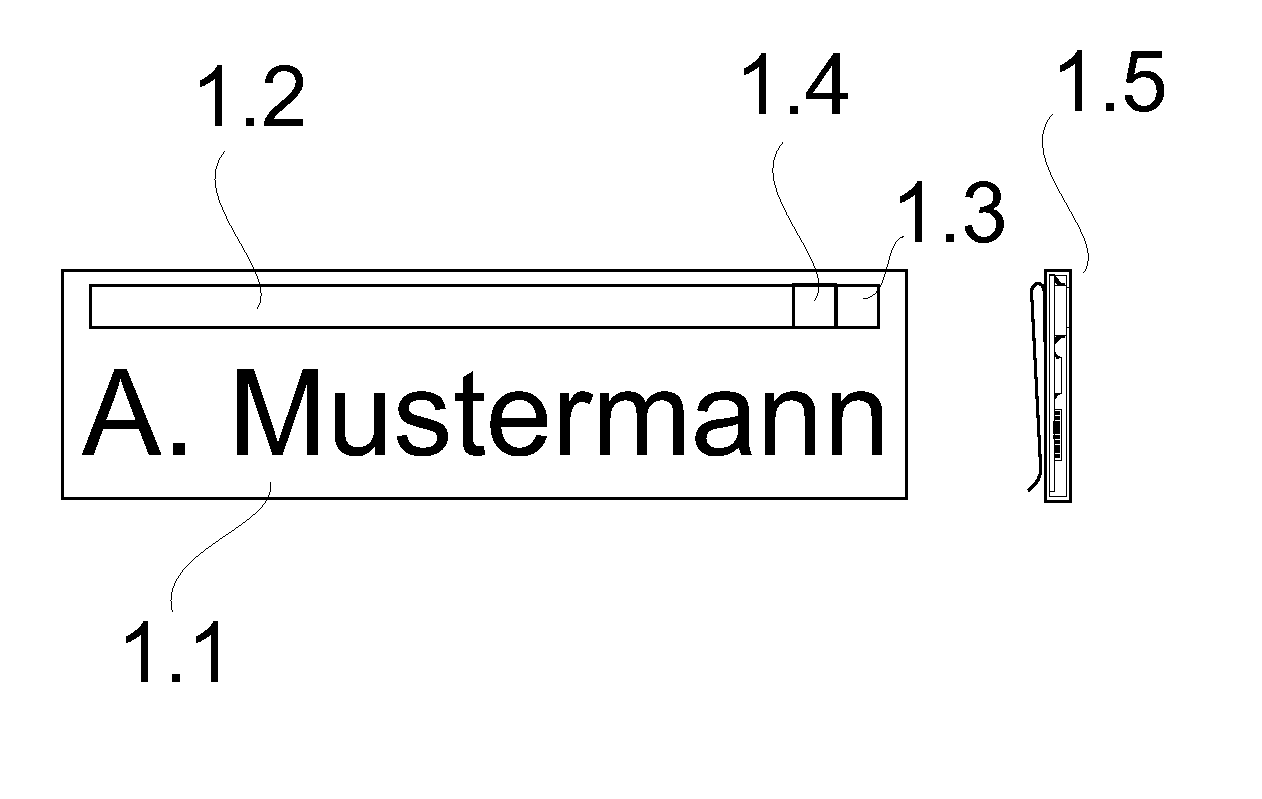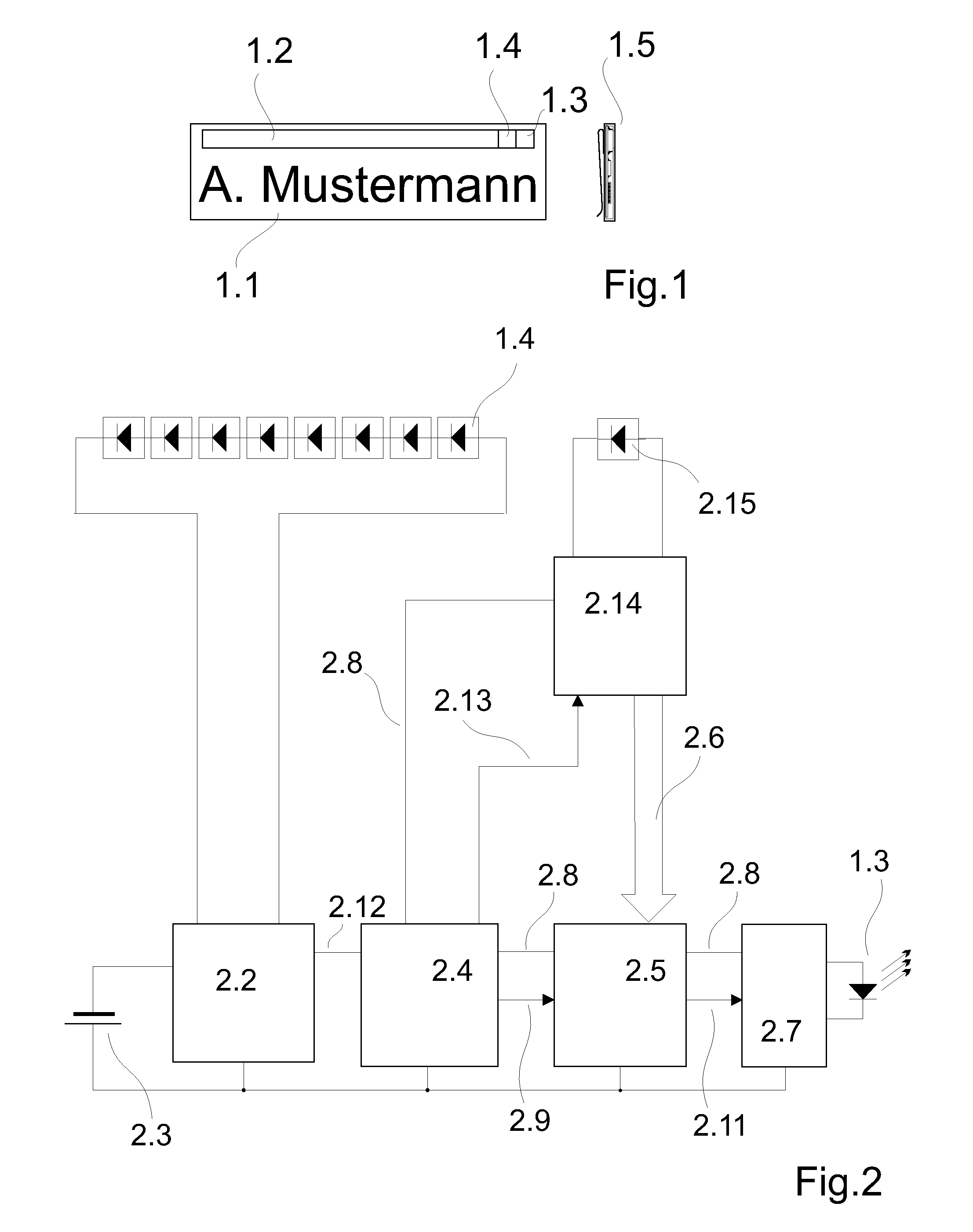Identification element having an optical transponder
a technology of optical transponders and identification elements, applied in the direction of transmission, transmission systems, indirect connection of subscribers, etc., can solve the problems of card placement directly, unsecure use of radio transponders, and door would be regularly opened by authorised persons, and achieve the effect of low power consumption
- Summary
- Abstract
- Description
- Claims
- Application Information
AI Technical Summary
Benefits of technology
Problems solved by technology
Method used
Image
Examples
Embodiment Construction
[0031]The invention is now described by way of example in more detail with reference to the accompanying drawings. Nevertheless, the exemplary embodiments are only examples which are not intended to limit the inventive concept to a certain arrangement.
[0032]Before the invention is described in detail, it should be pointed out that it is not restricted to the particular components of the device nor to the particular method steps, since these components and processes can vary. The terms used here are merely intended to describe special embodiments and are not used in a restrictive sense. If, moreover, the singular or indefinite articles are used in the description or in the Claims, these also refer to a plurality of these elements insofar as the general context does not make it unambiguously clear that something else is meant.
[0033]The Figures and in particular FIG. 1 show an identification element which is preferably in the form of a name tag or an identifying means or identification...
PUM
 Login to View More
Login to View More Abstract
Description
Claims
Application Information
 Login to View More
Login to View More - R&D
- Intellectual Property
- Life Sciences
- Materials
- Tech Scout
- Unparalleled Data Quality
- Higher Quality Content
- 60% Fewer Hallucinations
Browse by: Latest US Patents, China's latest patents, Technical Efficacy Thesaurus, Application Domain, Technology Topic, Popular Technical Reports.
© 2025 PatSnap. All rights reserved.Legal|Privacy policy|Modern Slavery Act Transparency Statement|Sitemap|About US| Contact US: help@patsnap.com



